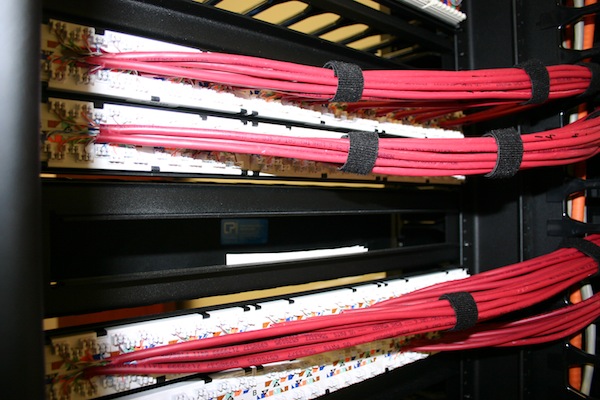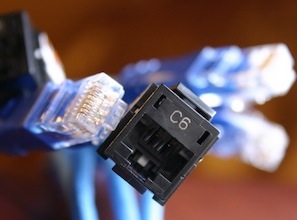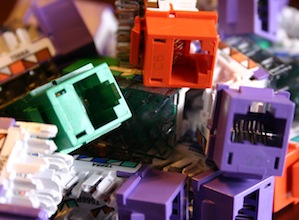Selecting Cable Types

Whether you are upgrading your existing structured cabling or installing a brand new system, careful consideration should be made when selecting your cable types. The equipment that you install; PCs, switches, servers, VOIP phones, etc., will only perform as well as the cable between them permits. It is likely that the cable you select and install will remain a fixture in your workplace for several years and, consequently, continue to connect future upgrades of equipment. Planning on the future technological possibilities and growth is paramount when selecting and investing in a structured cabling system.

Length
What is the distance from your telecommunications closet or equipment rack to your wall plate or jack location? If you are within 90 meters or 295 feet, a balanced twisted pair selection such as CAT5e, CAT6, or CAT6A will be suitable. If you are in excess of 90 meters (295 feet) and up to 300 meters (984 feet), then a duplex Multimode fiber optic cable choice would be appropriate.

Electromagnetic Environment
Is this cabling system to be installed in an environment that contains a high level of electromagnetic activity (industrial machinery or large electrical factory equipment, for example)? A shielded twisted pair (STP) or screened twisted pair (SCTP) might be a good choice. Multi-mode fiber optic cable would also be acceptable as fiber optic cables are unaffected by electromagnetic interference.
Many security sensitive (classified) networks that are cabled in environments containing public or un-classified networks require the cabling to be STP as well. Again, Multimode fiber optic cabling is an acceptable alternative.

Pathway Environment
Is this cable going to be in a plenum air return ceiling, a raised floor system, EMT, or completely contained in a telecommunications riser closet? Plenum rated jacket cable should always be selected when the cable is to be placed in any enclosed environment (drop ceiling or raised floor system for example) that also distributes environmental air and/or is used for environmental air return. Riser rated cable is typically reserved for scenarios where the pathway is entirely enclosed in conduit or is entirely enclosed in a vertical telecommunications closet "riser" system. If you are unsure what type of environment you have, you should consult a cabling professional such as an RCDD (Registered Communications Distribution Designer).
Cable Performance
Your cabling system must perform reliably at a determined level. That performance level is a product of the cable and connectivity (jacks, patch panels, patch cables, etc.) that you select. Be sure to select a cabling manufacturer and connectivity equipment manufacturer that have tested their components together and documented their compatibility. In fact, most manufactures will not guarantee the performance of their products unless they are installed with components from manufacturers that they recommend. Also, be sure that the cable and connectivity equipment you select match in type - CAT6 cable with CAT6 patch panels and jacks. The combined system will only perform to the specification of the lowest rated component. For example; upgrading to CAT6 cable while using CAT5e jacks and panels, will result in a CAT5 performing system.
The following are some performance levels for the most common types of structured cable mediums for TCP/IP networks:
- CAT5e is specified for systems up to 100MHZ and will support up to 1000 MBs transmission rates.
- CAT6 is specified for systems up to 250 MHz and will support up to 1000MBs transmission rates.
- CAT6A is specified for systems up to 500 MHz and will support transmission rates up to 10GBs.
- Multimode 62.5/125um - minimum bandwidth of 200 and 500 MHz/km at 850 and 1300 nm respectively.
- Multimode 50/125um - minimum bandwidth of 500 and 500 MHz/km at 850 and 1300 nm respectively.
- Multimode 50/125um Laser Optimized - minimum bandwidth of 20000 and 500 MHz/km at 850 and 1300 nm respectively.
While there are more performance characteristics to consider, these few will get you started in the right direction toward selecting the optimum cable medium for your system.
Your installed system will be an investment that should last many years. Take the time to consult with a knowledgeable cabling professional to insure that your project is a success.
